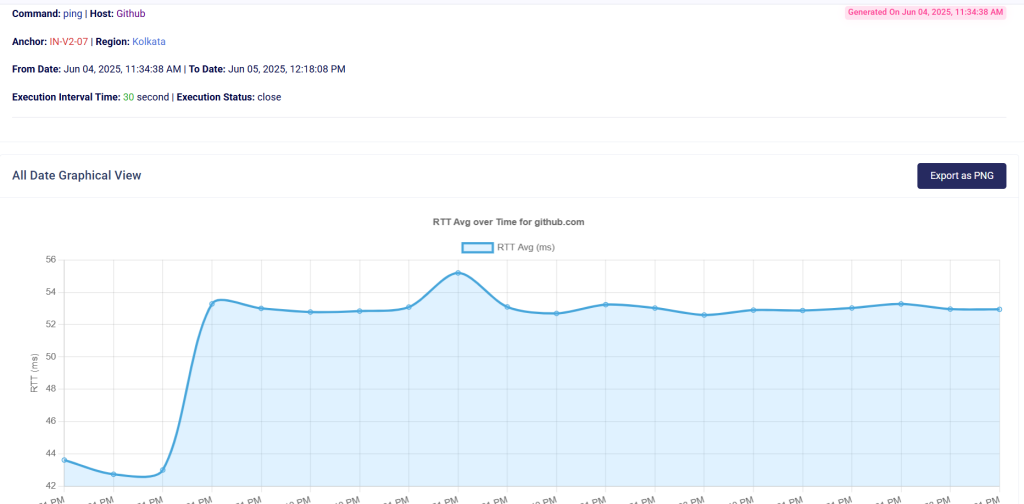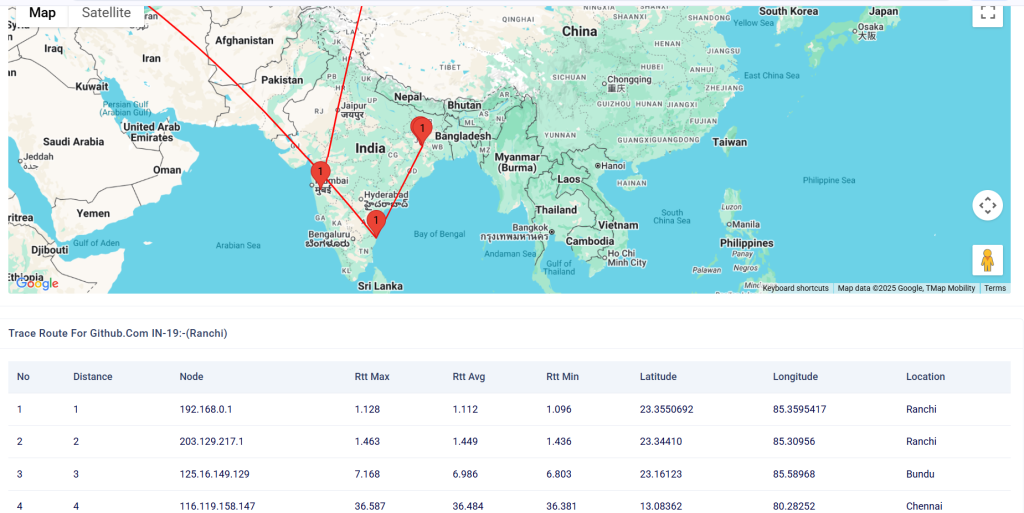In today’s digital age, understanding internet performance is crucial where our lives are increasingly intertwined with the digital realm, the performance and reliability of internet connections have never been more critical. Whether it’s for remote work, online education, or streaming entertainment, a seamless internet experience is essential. However, the complexities of the internet can often lead to frustrating slowdowns and connectivity . This is where internet measurement comes into play. By measuring these metrics, users can gain valuable insights into their internet connection and troubleshoot issues effectively. Our platform leverages a network of Raspberry Pi devices, referred to as “anchors,” distributed across India to perform these measurements. In this blog, I will share my journey in developing an internet research network platform that enables users, researchers to gain a deeper understanding of their internet performance by measuring key internet metrics such as ping, DNS queries, and traceroute.
Understanding the Significance of Internet Measurement
The process of collecting data on how well the internet is functioning, which can include metrics such as latency, bandwidth, packet loss, throughput and DNS resolution times. These measurements are crucial for understanding the health of internet connectivity and reliability
Common Metrics
- Latency:
- Latency measures the time it takes for data to travel from the source to the destination and back again. It is often expressed in milliseconds (ms). High latency can lead to noticeable delays in online activities, such as video calls or gaming, making it a critical metric for users.
- DNS Resolution Time:
- DNS (Domain Name System) resolution time refers to the duration it takes for a domain name to be translated into an IP address. Slow DNS resolution can result in delays when accessing websites, impacting the overall browsing experience.
- Route Tracing:
- Route tracing involves tracking the path that data packets take across the internet from the source to the destination. This metric helps identify any bottlenecks or failures along the route, providing insights into where issues may be occurring in the network.
Why It Matters
The goal of internet measurement is to improve the overall user experience i.e why understanding these measurements is vital.
By analyzing the measurement data of latency, DNS resolution times, and routing paths, users can pinpoint where problems are occurring. For instance, if latency is unusually high, it may indicate network congestion or issues with the service provider hence diagnosing connectivity issues and Performance optimization.
How Our Platform Works
At the heart of our Internet Measurement Platform are the Raspberry Pi devices, which we call anchors. These anchors are strategically placed in various locations across India to provide a comprehensive view of internet performance. Each anchor acts as a measurement point, allowing us to gather data from different geographical areas.
Measurement Commands
Through our platform, users can initiate specific commands to the anchors. These commands include:
- Ping Measurement: This command measures the round-trip time for packets sent from the anchor to a specified website and back. It helps assess the latency of the connection.
- DNS Query: This measurement checks how quickly a domain name is resolved into an IP address. It’s essential for understanding how DNS performance can affect overall internet speed.
- Traceroute Measurement: This command traces the path that packets take from the anchor to the target website. It provides insights into the route taken and identifies any potential bottlenecks or points of failure along the way.
Data Collection and Analysis
Once the measurements are taken, the data is collected and analyzed. Our platform presents this information in a user-friendly interface, allowing users to visualize their internet performance metrics. This data can be invaluable for troubleshooting connectivity issues, optimizing network performance, and making informed decisions about internet service providers.
Moreover, researchers and students can conduct network analysis assessments using our platform by executing commands from various anchors. They require a system that allows them to tag specific measurement commands according to each assignment. This enables them to perform their project work effectively, to execute these commands, collect relevant data, and generate reports in various formats (e.g., .csv, .pdf, .png, .json).
Recently in our current system we have implemented a new feature that allows faculty members to design and assign research-based projects, ensuring students can easily execute tasks, gather data, and generate the required format reports. For that faculty can enroll students, manage assignments based on projects and also can track each student’s project activity by accessing the list of executed commands through their dashboard.
Conclusion
In conclusion, our measurement platform offers a comprehensive solution for conducting internet performance tests and network analysis assessments. With the ability to execute commands from multiple anchors, researchers and students can gather valuable data to enhance their project work. We invite you to explore the platform https://v2.aiori.in/, try out its features, and share your experiences with us.




